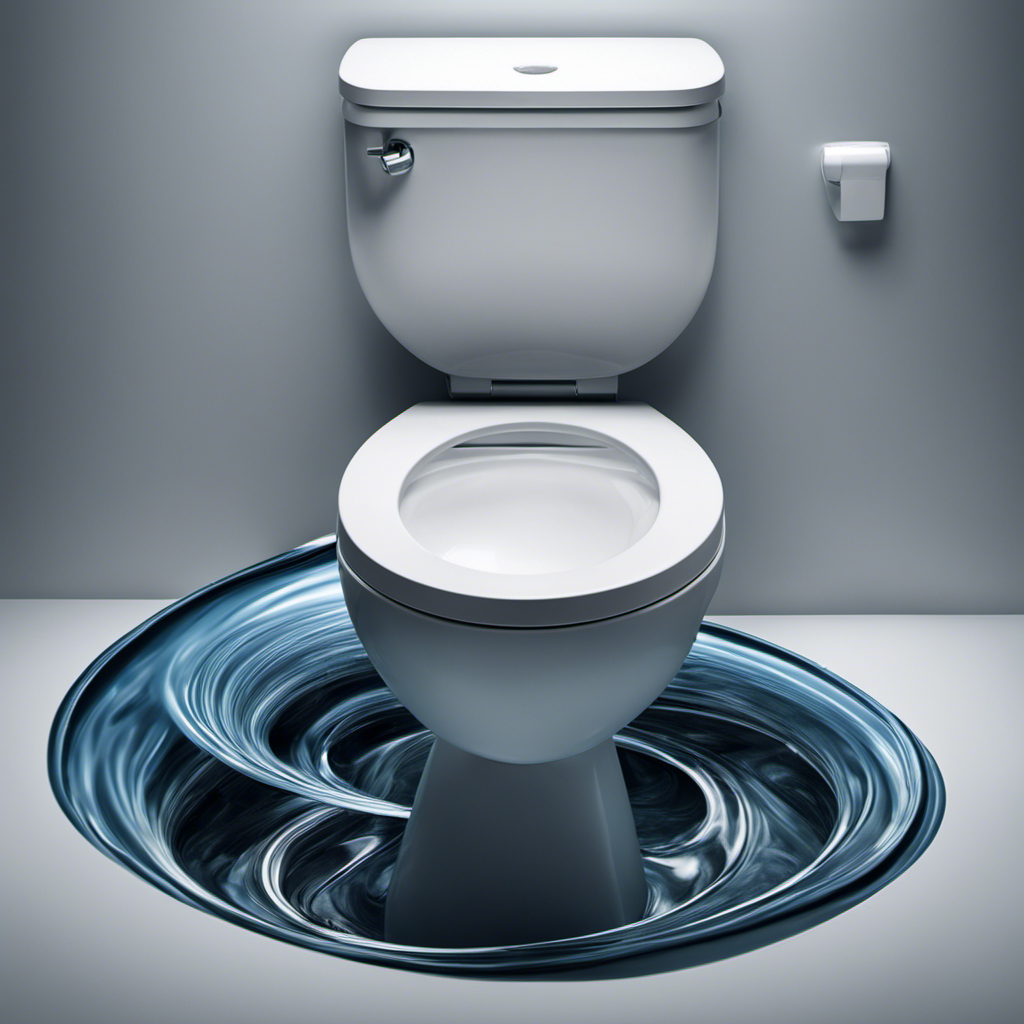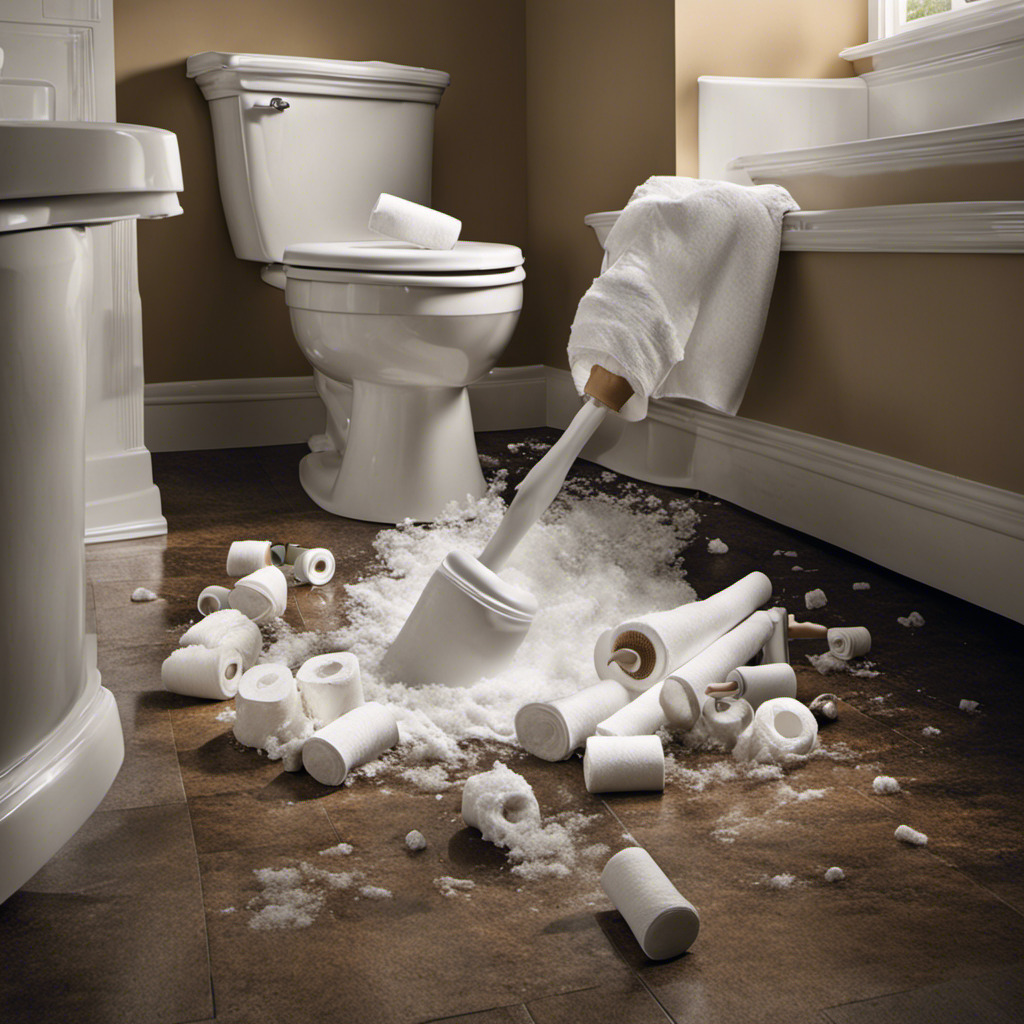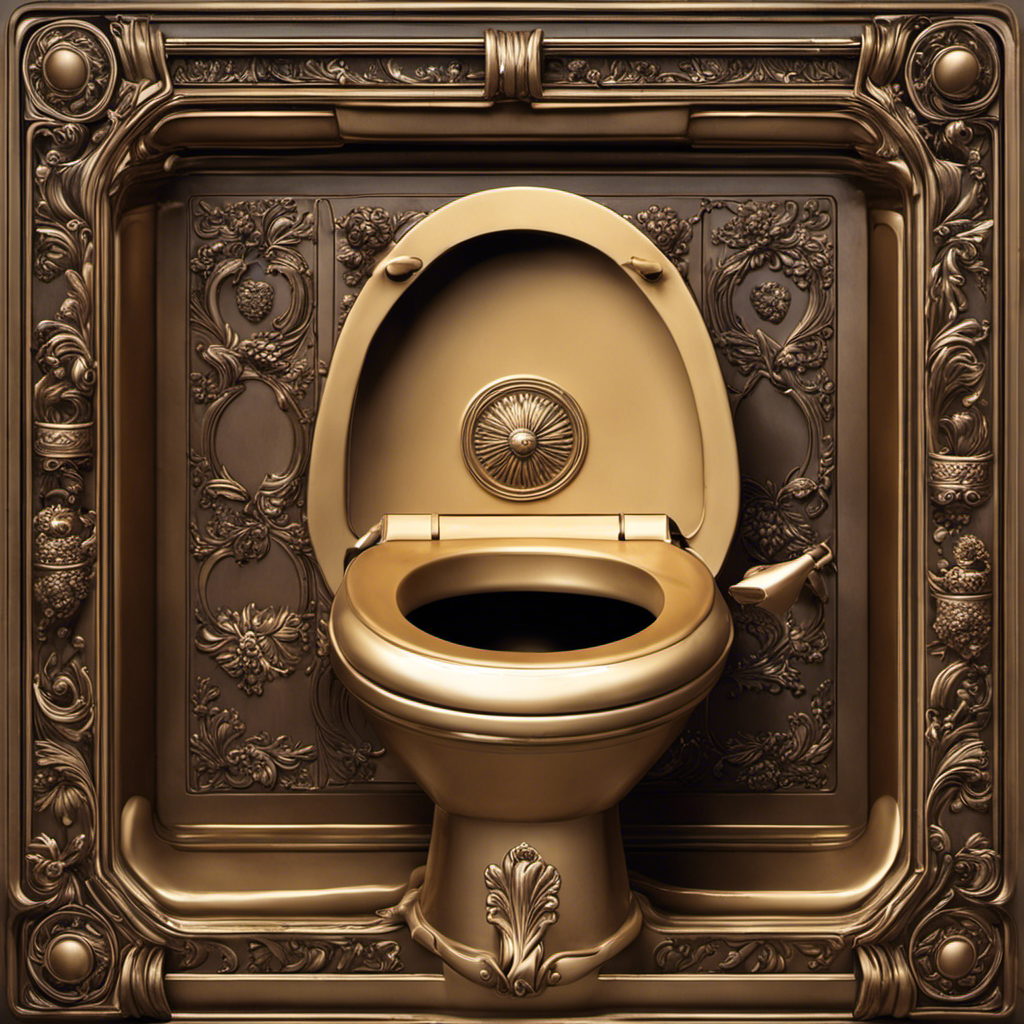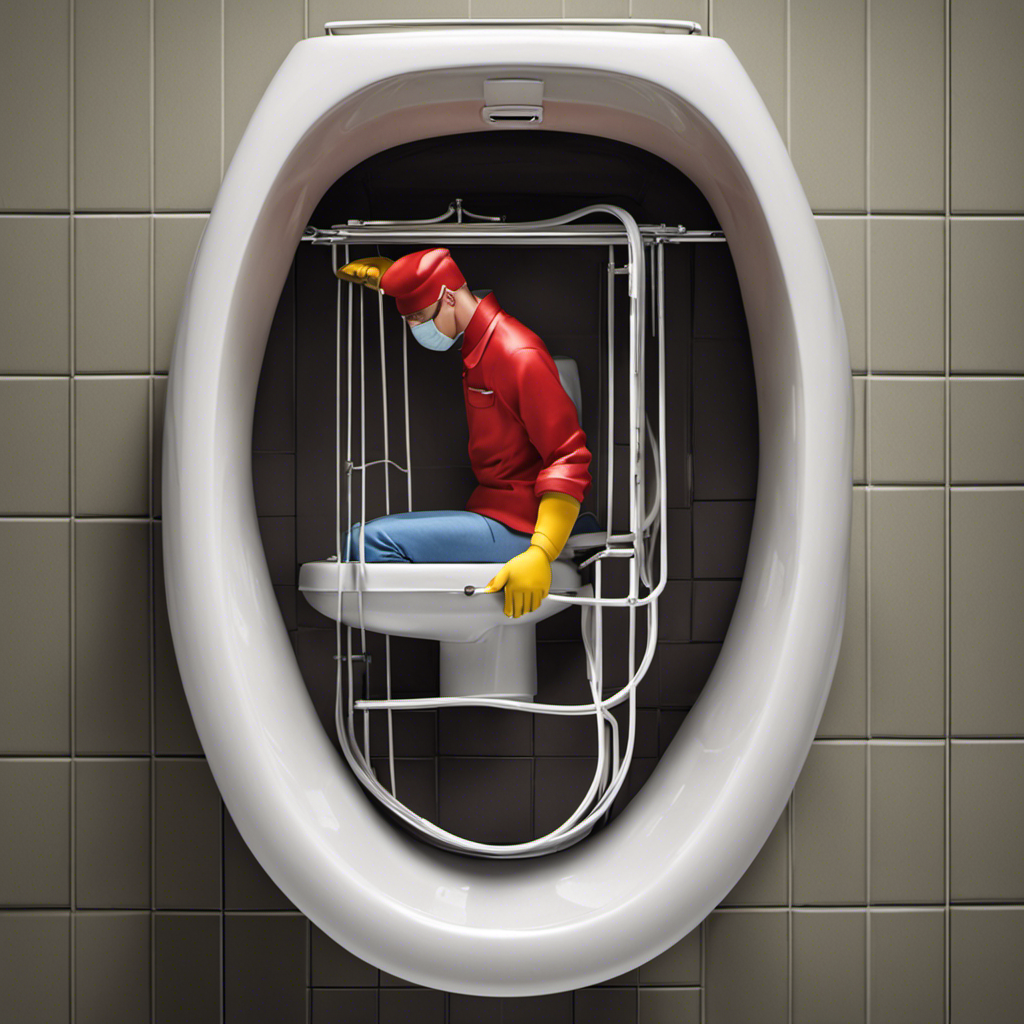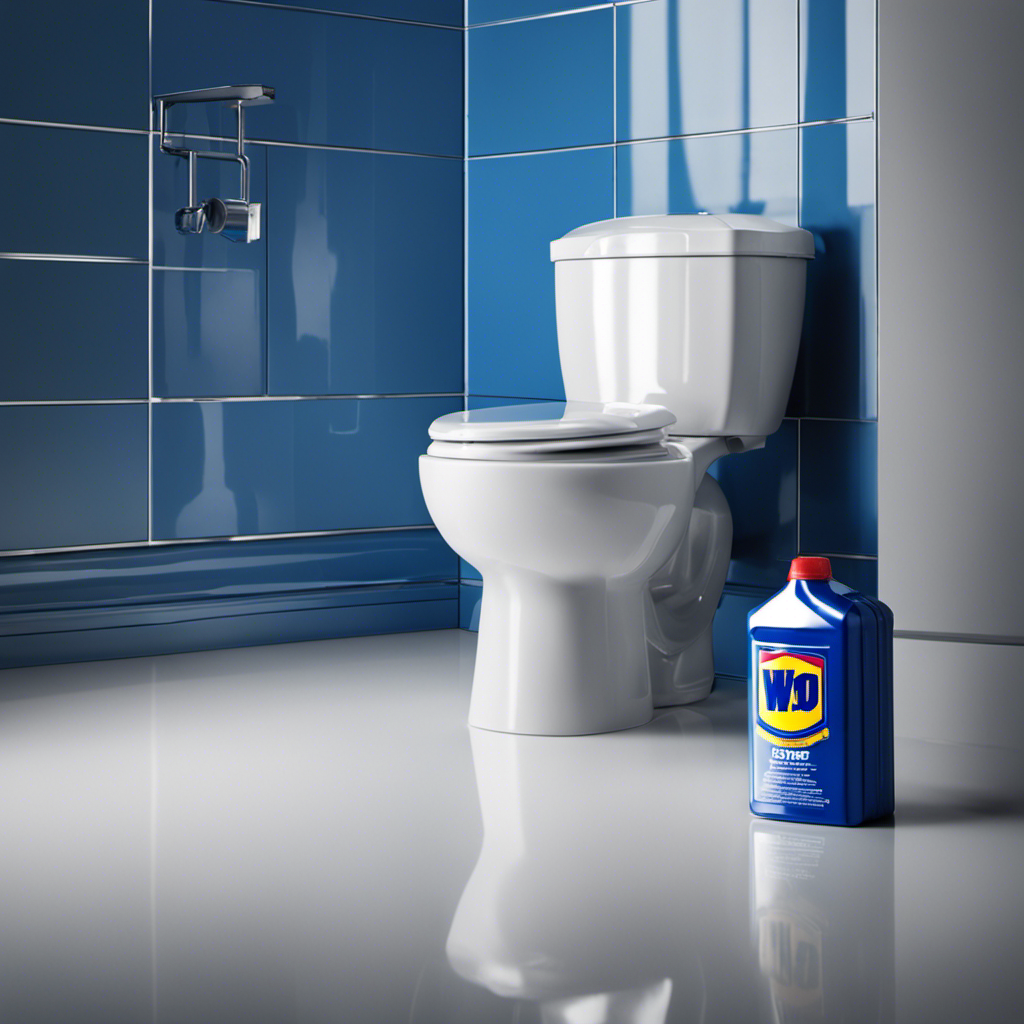As a homeowner, I’ve encountered many plumbing issues, but none are quite as frustrating as a slow-draining toilet. It’s like watching time move in slow motion, as the water takes forever to disappear.
In this article, I’ll share my knowledge and expertise on the common causes of this problem, and provide you with step-by-step instructions on how to unclog a slow-draining toilet.
Additionally, I’ll discuss signs that indicate your toilet drain needs cleaning and give you prevention tips to avoid this issue in the future.
Let’s dive in and fix that sluggish drain together.
Key Takeaways
- Clogged pipes are a common cause of slow-draining toilets.
- DIY techniques such as using a plunger, auger, or homemade drain cleaner can often unclog the toilet.
- Signs that your toilet drain needs cleaning include slow draining after flushing, gurgling sounds, and water backup into the bowl or onto the floor.
- Regular maintenance and prevention tips, such as cleaning the toilet regularly and avoiding flushing non-flushable items, can help prevent slow-draining toilets.
Common Causes of Slow-Draining Toilets
One of the most common causes of slow-draining toilets is a clogged pipe. When it comes to toilet drain maintenance, it is important to be proactive in preventing clogs. Regular cleaning and maintenance can help keep your toilet drain flowing smoothly.
There are several DIY solutions that can help unclog a toilet drain. One option is to use a plunger, which can create pressure to dislodge the blockage. Another DIY solution is to use a plumbing snake or auger, which can help break up and remove the clog. Additionally, using a mixture of baking soda and vinegar or a commercial drain cleaner can also be effective in clearing a clogged pipe.
How to Unclog a Slow-Draining Toilet
To unclog a toilet that is draining sluggishly after you have flushed it, you can try using a plunger. Here are some DIY toilet unclogging techniques that may help you restore proper drainage:
-
Use a plunger: Place the suction cup of the plunger over the drain opening and push down firmly, then pull up vigorously. Repeat this motion several times to create suction and dislodge the clog.
-
Auger the drain: If the plunger doesn’t work, you can try using a toilet auger. Insert the auger into the drain and rotate the handle to break up or remove the blockage.
-
Use a homemade drain cleaner: Mix equal parts baking soda and vinegar, then pour it into the drain. Let it sit for about 30 minutes, then flush with hot water. The chemical reaction can help dissolve the clog.
-
Call a professional: If all else fails, it may be time to enlist the help of a professional plumber who specializes in toilet drain maintenance.
Remember to exercise caution when attempting any DIY techniques, and if the problem persists or worsens, it’s best to seek professional assistance.
Signs That Your Toilet Drain Needs Cleaning
If your toilet is draining sluggishly, it may be a sign that the drain needs cleaning. Regular toilet drain maintenance is essential to prevent clogs and keep your toilet functioning properly. There are several signs that indicate a clogged toilet drain, including:
- Slow draining: When you flush the toilet, the water takes longer than usual to go down the drain.
- Gurgling sounds: You may hear strange gurgling noises coming from the toilet when you flush, indicating a blockage.
- Water backup: Water might start to back up into the bowl or overflow onto the bathroom floor.
Addressing these signs promptly can help prevent further damage and costly repairs.
In the next section, I will provide prevention tips for avoiding slow-draining toilets and keeping your toilet drain clean and clear.
Prevention Tips for Avoiding Slow-Draining Toilets
Regular maintenance is important for preventing slow drains in the toilet. To keep your toilet draining efficiently, here are some maintenance techniques for efficient toilet drainage:
-
Clean the toilet bowl regularly: Use a toilet brush and cleaner to remove any buildup and prevent clogs.
-
Check the water level: Ensure that the water level in the tank is at the appropriate level, as this can affect the flushing power.
-
Avoid flushing non-flushable items: Only flush toilet paper and waste down the toilet to prevent blockages.
-
Use natural remedies for improving toilet flushing speed: Pouring a mixture of baking soda and vinegar down the drain can help remove any debris and improve drainage.
When to Call a Professional Plumber for a Slow-Draining Toilet
When you notice that the water in your toilet is not going down as quickly as it should, it’s a good idea to call a professional plumber for assistance.
While there are DIY methods for clearing a slow-draining toilet, such as using a plunger or a drain snake, it’s important to understand that these methods may only provide temporary relief.
A professional plumber has the expertise and tools to properly diagnose and fix the underlying issue causing the slow drainage.
Regular toilet maintenance is crucial in preventing such problems. This includes avoiding flushing non-flushable items, using toilet paper in moderation, and scheduling periodic inspections by a professional plumber.
Frequently Asked Questions
How Much Does It Typically Cost to Unclog a Slow-Draining Toilet?
Typically, the cost to unclog a slow-draining toilet depends on various cost factors such as the severity of the clog, the location, and the plumber’s fees. Common causes of slow-draining toilets include clogs, pipe issues, and sewer line problems.
Can Using Certain Types of Toilet Paper Contribute to a Slow-Draining Toilet?
Using certain types of toilet paper can contribute to a slow-draining toilet. Toilet paper alternatives, like bidets or wet wipes, may alleviate the issue. Additionally, low water pressure can affect toilet drainage, so ensure it’s at an adequate level.
Is It Possible for a Slow-Draining Toilet to Be a Sign of a Larger Plumbing Issue?
Is a slow-draining toilet a sign of a larger plumbing issue? It’s possible. Causes of slow draining toilets can range from clogs to inadequate venting. Identifying the signs early on can help prevent further damage.
Are There Any DIY Methods for Unclogging a Slow-Draining Toilet Before Calling a Professional Plumber?
There are DIY methods to unclog a slow-draining toilet before calling a professional plumber. Some common causes of slow-draining toilets can be a clog in the trap or main drain line.
How Long Does It Usually Take for a Professional Plumber to Fix a Slow-Draining Toilet?
On average, a professional plumber can fix a slow-draining toilet within a couple of hours. Signs of a clogged toilet include water backing up or taking longer to drain.
Conclusion
In conclusion, dealing with a slow-draining toilet can be frustrating, but there are several common causes and solutions to consider. By understanding the potential issues and taking preventative measures, such as avoiding flushing non-flushable items, you can minimize the chances of your toilet drain becoming clogged.
However, if you’ve tried all the remedies and the problem persists, it may be time to call a professional plumber. Remember, a properly functioning toilet is essential for a smooth-running household.
So, why wait? Take action now and ensure your toilet drains efficiently for a worry-free bathroom experience.
